#imperial house of russia
Explore tagged Tumblr posts
Text
Guys, where should I start with the russian imperial family? the romanavs? there's so many books available but what do you think are beginner friendly and comprehensive??
#russia#romanov#russian imperial family#imperial house of russia#romanovs#the romanovs#tsar#tsarina#tsarina alexandra#ivan the terrible#nicholas ii#tsar nicholas ii#tsareviich#i just put whatever came up on google as tags#😭😭😭#random
5 notes
·
View notes
Text




Jordanian Staircase, Winter Palace, St. Petersburg, Russia,
Source: piter places
#art#design#architecture#history#luxury lifestyle#style#luxury house#luxury home#russia#st petersburg#palace#imperial#imperial palace#jordinian#grand staircase#stairs#piterplaces#winter palace
2K notes
·
View notes
Text
Russian culture is great just because they constantly erase literature and kill artists from the country that russians want to conquer

This photo speaks volumes 💔😭

Today, the Russians struck one of the largest printing complexes in Europe, the Factor-Druk in Kharkiv. "Kharkiv used to be the center of book publishing in Ukraine and remains so even under constant shelling. Every third book published in the country is printed by Factor-Druk," wrote the Sense bookstore chain. "This is one of the largest full-cycle printing complexes in Europe, so books from almost all Ukrainian publishers are printed there," Vivat Publishing House reported. ❗Since the beginning of the year, more than 700 libraries have been destroyed or vandalized in Ukraine.


#ukraine#kharkiv#russia is a terrorist state#russian invasion of ukraine#russo ukrainian war#genocide#stop the genocide#russian imperialism#russian culture is erasing Ukrainian culture#world#stand with ukraine#video#russian war crimes#war crimes#український tumblr#український тамблер#укртумбочка#important#signal boost#world news#culture#art#books#literature#russian propaganda#publishing house#publishing industry#twiter#unmute#sound on
104 notes
·
View notes
Text
Some of Empress Consort Maria Feodorovna (Minnie)'s dresses from the 1880s - 1910s.
All from the Hermitage















#maria feodorovna#history of fashion#romanovs#hermitage museum#i love russian court gowns#the red court gown is so pretty#charles frederick worth#house of worth#court gown#imperial russia
128 notes
·
View notes
Text
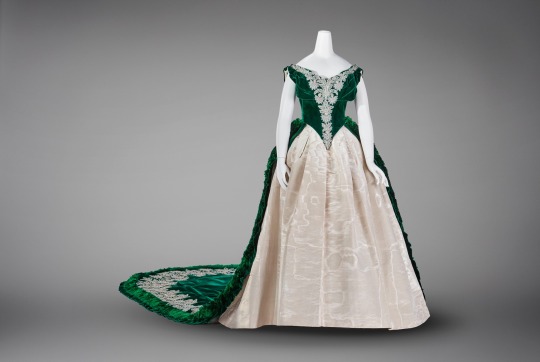
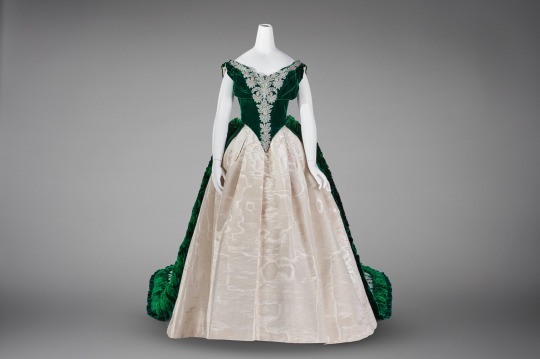




Imperial Russian court dress worn by Princess Maria Maximilianovna of Leuchtenberg. x
Designed by Charles Frederick Worth in Paris, France, c. 1888.
#1880s#mine#fashion#princess maria maximilianova#charles frederick worth#19th century dress#historical fashion#paris#paris france#historical clothing#antique#princess wilhelm of baden#19th century#royal fashion#grand duchess#russian royalty#russian royal family#19th century fashion#1880s fashion#1880s dress#beauharnais#house of beauharnais#house of leuchtenberg#imperial russia#russian empire#princess maria maximilianova of leuchtenberg#french royalty#french royal family
108 notes
·
View notes
Text
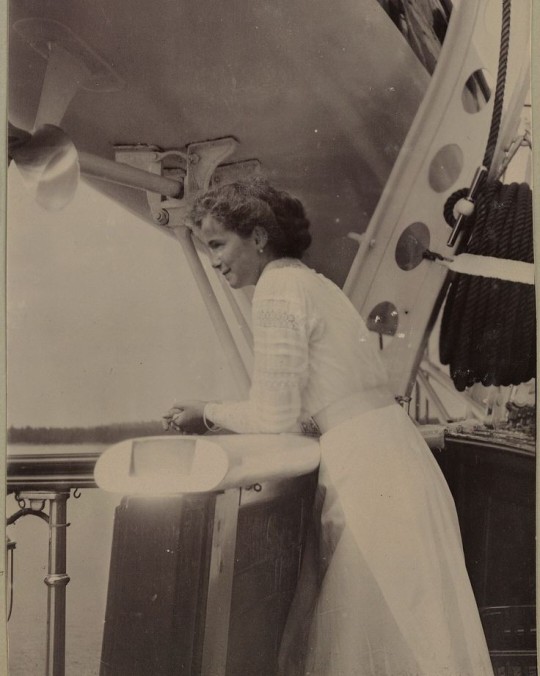
Grand Duchess Olga Nikolaevna of Russia on the Imperial yacht Standart, 1912.
#olga nikolaevna#grand duchess olga#romanovs#house of romanov#romanov dynasty#standart#the imperial yacht#imperial yacht standart#russian imperial family#russian royalty#imperial russia#russian empire#rossiya#russia#1910s#1912#grand duchesses#she's 🥰😍
98 notes
·
View notes
Text

Imperial court gown worn by Grand Duchess Xenia Alexandrovna (1875-1960), sister of Tsar Nicholas II of Russia (1868- 1918).
1890′s-1900′s
📍: The Hermitage, St. Petersburg
#Tsar Nicholas II of Russia#Grand Duchess Xenia Alexandrovna#House of Romanov#Romanov dynasty#imperial court gown#1800s#1900s#19th century#20th century#fashion#court gown
19 notes
·
View notes
Text
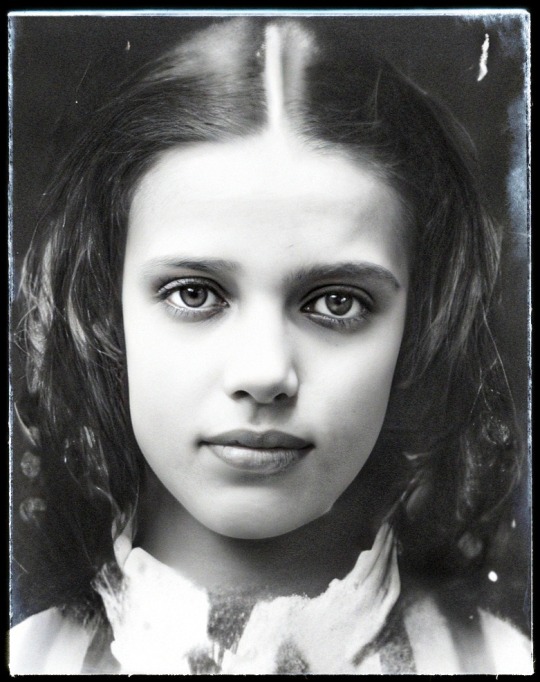
🌸🌹🌸... Princesse Dagmar du Danemark, elle deviendra Tsarine de Russie en épousant le futur Alexandre III.... 🌹🌸🌹
38 notes
·
View notes
Photo

Princess Alix of Hesse - later Empress Alexandra Feodorovna of Russia - in mourning of her father Grand Duke Louis IV of Hesse, 1892.
#Princess Alix of Hesse#Empress Alexandra Feodorovna of Russia#Empress Alexandra Feodorovna#Empress Alexandra#last tsarina#victorian#victorian mourning#Victorian fashion#house of hesse#romanovs#imperial russia#Imperial Family#russian imperial family#1890s#1892#1890s fashion#history colored#colored photography
113 notes
·
View notes
Text
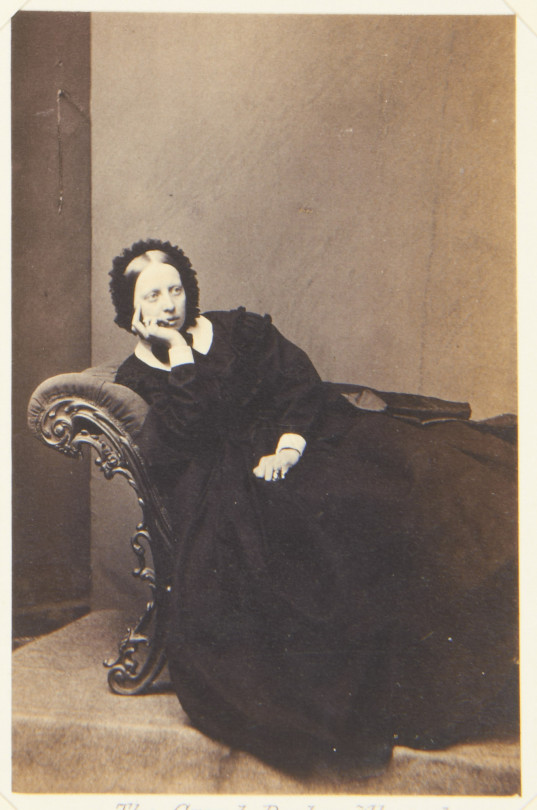
Photograph of Grand Duchess Alexandra, lying on a chaise-longue, facing towards the camera. She rests her head on her right hand and gazes to the right. She wears a dark coloured dress and dark coloured hair covering.
Source
#alexandra petrovna#the royal collection#Alexandra of Oldenburg#house of romanov#imperial russia#long live the queue
18 notes
·
View notes
Text
“Yesterday I received your dear letter with great joy; it made me completely happy. From the bottom of my heart I thank you for every living kind word! My thoughts are always next to you, my beloved Sasha , what I would do to have you next to me now. I miss you so much, I’m never calm when I’m away from you... I suffer and I’m sad, I’m looking forward to our meeting with such impatience!”
Empress Maria Feodorovna to Emperor Alexander III, June 5, 1891
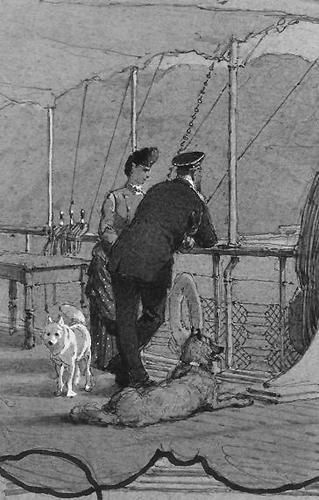
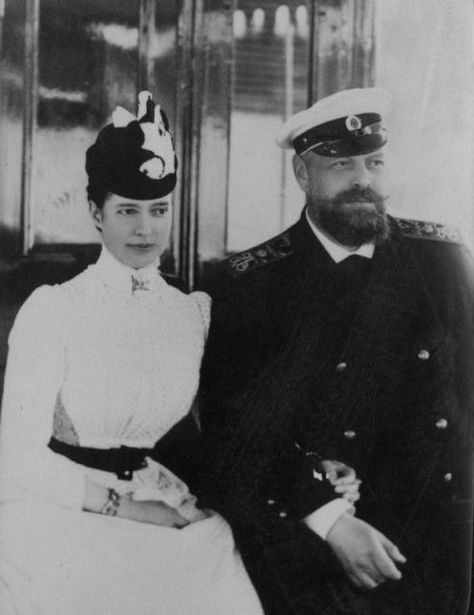
#history#russian empire#imperial russia#royalty#czar alexander iii#tsar alexander iii#maria feodorovna#dagmar of denmark#romanovs#house of romanov#otma#otmaa#lovers#love
21 notes
·
View notes
Text

The "Blue Study"
Zubov Wing, Catherine Palace, Tsarskoe Selo, Russia,
The Blue Study or 'Snuffbox' of Catherine the Great Designed by Scottish architect Charles Cameron in the 1780s.
#art#design#architecture#history#luxury lifestyle#style#luxury house#luxury home#palace#imperial#russia#tsarskoe selo#zubov wing#study#snuffbox#charles cameron#1780s#catherine palace
312 notes
·
View notes
Text

Alexander III and his niece Victoria of Wales
I like these two historical figures although I admit that for what we know about their personalitie, neither one would be precisely soft and cuddly.
#Alexander III#russian history#imperial russia#romanov family#Princess Victoria of Wales#house of saxe coburg and gotha#house of windsor
59 notes
·
View notes
Text
Let us take a moment to remember our Tsar Martyr Nicholas II who 106 years ago, on the night of July 16-17, was murdered along with his immediate family and four of their faithful retinue in a dismal basement in Yekaterinburg.
May you rest in peace, Tsar Nicholas, and your beloved wife and beautiful children. The burdens you had to bear were too heavy for an earthly crown, but now you have a heavenly kingdom to inherit.
Forgive them father for they know not what they do.
#tsar nicholas ii#Nicholas Alexandrovich Romanov#Russia#Imperial Russia#House of Romanov#Tsar Martyr#Empress Alexandra Feodorovna#Grand Duchess Olga Nikolaevna#Grand Duchess Tatiana Nikolaevna#Grand Duchess Maria Nikolaevna#Grand Duchess Anastasia Nikolaevna#Tsarevich Alexei Nikolaevich
8 notes
·
View notes
Text
Women of Imperial Russia: Ages at First Marriage
I have only included women whose birth dates and dates of marriage are known within at least 1-2 years, therefore, this is not a comprehensive list. This data set ends with the Revolution of 1917.
Eudoxia Lopukhina, wife of Peter I; age 20 when she married Peter in 1689 CE
Catherine I of Russia, wife of Peter I; age 18 when she married Johan Cruse in 1702 CE
Anna of Russia, daughter of Ivan V; age 17 when she married Frederick William Duke of Courland and Semigallia in 1710 CE
Anna Petrovna, daughter of Peter I; age 17 when she married Charles Frederick I, Duke of Holstein-Gottorp, in 1725 CE
Catherine II, wife of Peter III; age 16 when she married Peter in 1745 CE
Natalia Alexeievna, wife of Paul I; age 17 when she married Paul in 1773 CE
Maria Feodorovna, wife of Paul I; age 17 when she married Paul in 1776 CE
Elizabeth Alexeivna, wife of Alexander I; age 14 when she married Alexander in 1793 CE
Anna Feodorovna, wife of Konstantin Pavlovich; age 15 when she married Konstantin in 1796 CE
Alexandra Pavlovna, daughter of Paul I; age 16 when she married Archduke Joseph of Austria in 1799 CE
Elena Pavlovna, daughter of Paul I; age 15 when she married Frederick Louis, Duke of Mecklenburg-Schwerin in 1799 CE
Maria Pavlovna, daughter of Paul I; age 18 when she married Charles Frederick, Grand Duke of Saxe-Weimar-Eisenach in 1804 CE
Catherine Pavlovna, daughter of Paul I; age 21 when she married Duke George of Oldenburg in 1809 CE
Anna Pavlovna, daughter of Paul I; age 21 when she married William II of the Netherlands in 1816 CE
Alexandra Feodorovna, wife of Nicholas I; age 19 when she married Nicholas in 1817 CE
Joanna Grudzinska, wife of Konstantin Pavlovich; age 29 when she married Konstantin in 1820 CE
Elena Pavlovna, wife of Mikhail Pavlovich; age 17 when she married Mikhail in 1824 CE
Maria Nikolaevna, daughter of Nicholas I; age 20 when she married Maximilian de Beauharnais, Duke of Leuchtenberg, in 1839 CE
Maria Alexandrovna, wife of Alexander II; age 17 when she married Alexander in 1841 CE
Elizaveta Mikhailovna, daughter of Mikhail Pavlovich; age 17 when she married Adolphe, Grand Duke of Luxembourg, in 1844 CE
Alexandra Nikolaevna, daughter of Nicholas I; age 19 when she married Prince Frederick-William of Hesse-Kassel, in 1844 CE
Olga Nikolaevna, daughter of Nicholas I; age 24 when she married Charles I of Wurttemberg, in 1846 CE
Alexandra Iosifovna, wife of Konstantin Nikolaevich; age 18 when she married Konstantin in 1848 CE
Catherine Mikhailovna, daughter of Mikhail Pavlovich; age 24 when she married Duke Georg August of Mecklenburg-Strelitz, in 1851 CE
Alexandra Petrovna, wife of Nicholas Nikolaevich the Elder; age 18 when she married Nicholas in 1856 CE
Olga Feodorovna, wife of Michael Nikolaevich; age 18 when she married Michael in 1857 CE
Maria Feodorovna, wife of Alexander III; age 19 when she married Alexander III in 1866 CE
Olga Konstantinovna, daughter of Konstantin Nikolaevich; age 16 when she married George I of Greece in 1867 CE
Vera Konstantinovna, daughter of Konstantin Nikolaevich; age 20 when she married Duke Eugen of Wurttemberg in 1874 CE
Maria Pavlovna, wife of Vladimir Alexandrovich; age 20 when she married Vladimir in 1874 CE
Maria Alexandrovna, daughter of Alexander II; age 19 when she married Alfred, Duke of Edinburgh, in 1874 CE
Anastasia Mikhailovna, daughter of Michael Nikolaevich; age 19 when she married Friedrich Franz III, Duke of Mecklenburg-Schwerin in 1879 CE
Nadezhada Alexandrovna Dreyer, wife of Nicholas Konstantinovich; age 21 when she married Nicholas in 1882 CE
Elizabeth Feodorovna, wife of Sergei Alexandrovich; age 20 when she married Sergei in 1884 CE
Olga Valerianovna Paley, wife of Paul Alexandrovich; age 19 when she married Erich von Pistolhkors in 1884 CE
Elizabeth Mavrikievna, wife of Konstantin Konstantinovich; age 19 when she married Konstantin in 1885 CE
Anastasia of Montenegro, wife of Nicholas Nikolaevich the Younger; age 21 when she married George Maximilianovich, Duke of Leuchtenberg in 1889 CE
Milica of Montenegro, wife of Peter Nikolaevich; age 23 when she married Peter in 1889 CE
Alexandra of Greece and Denmark, wife of Paul Alexandrovich; age 19 when she married Paul in 1889 CE
Sophie Nikolaievna, wife of Michael Mikhailovich; age 23 when she married Michael in 1891 CE
Victoria Feodorovna, wife of Kirill Vladimirovich; age 18 when she married Ernest Louis, Grand Duke of Hesse, in 1894 CE
Xenia Alexandrovna, wife of Alexander Mikhailovich; age 19 when she married Alexander in 1894 CE
Alexandra Feodorovna, wife of Nicholas II; age 22 when she married Nicholas in 1894 CE
Olga Alexandrovna, daughter of Alexander II; age 18 when she married Count George-Nicholas von Merenberg in 1985 CE
Maria of Greece and Denmark, wife of George Mikhailovich; age 24 when she married George in 1900 CE
Alexandra von Zarnekau, wife of George Alexandrovich; age 16 when she married George in 1900 CE
Catherine Alexandrovna, daughter of Alexander II; age 23 when she married Alexander Baryatinksy in 1901 CE
Olga Alexandrovna, daughter of Alexander III; age 19 when she married Duke Peter Alexandrovich of Oldenburg
Elena Vladimirovna, daughter of Vladimir Alexandrovich; age 20 when she married Prince Nicholas of Greece and Denmark in 1902 CE
Natalia Brasova, wife of Michael Alexandrovich; age 22 when she married Sergei Mamontov in 1902 CE
Elisabetta di Sasso Ruffo, wife of Andrei Alexandrovich; age 31 when she married Alexander Alexandrovitch Frederici in 1907 CE
Maria Pavlovna, daughter of Paul Alexandrovich; age 18 when she married Prince Wilhelm of Sweden in 1908 CE
Helen of Serbia, wife of Ioann Konstantinovich; age 27 when she married Ioann in 1911 CE
Tatiana Konstantinovna, daughter of Konstantin Konstantinovich; age 21 when she married Konstantine Bagration of Mukhrani, in 1911 CE
Irina Alexandrovna, daughter of Alexander Mikhailovich; age 19 when she married Felix Felixovich Yusupov in 1914 CE
Nadejda Mikhailovna, daughter of Michael Mikhailovna; age 20 when she married George Mountbatten in 1916 CE
Antonina Rafailovna Nesterovkaya, wife of Gabriel Konstantinovich; age 27 when she married Gabriel in 1917 CE
Nadejda Petrovna, wife of Nicholas Orlov; age 19 when she married Nicholas in 1917 CE
Anastasia Mikhailovna, daughter of Michael Mikhailovna; age 25 when she married Sir Harold Wernher in 1917 CE
59 women; average age at first marriage was 20 years old. The oldest bride was 31 at her first marriage; the youngest was 14.
19 notes
·
View notes
Text

Empress Elizaveta Alexeievna of Russia
#empress elizaveta alexeievna#russian imperial family#imperial russia#russian history#house of romanov
12 notes
·
View notes